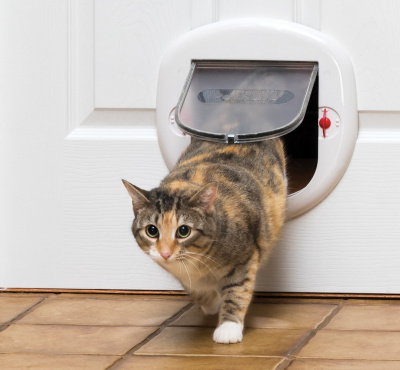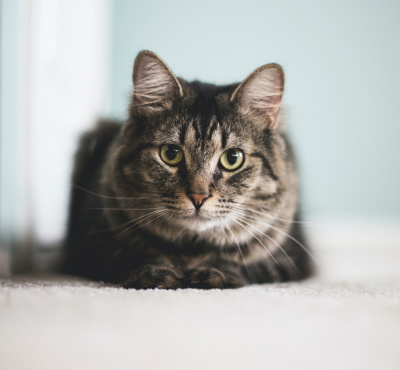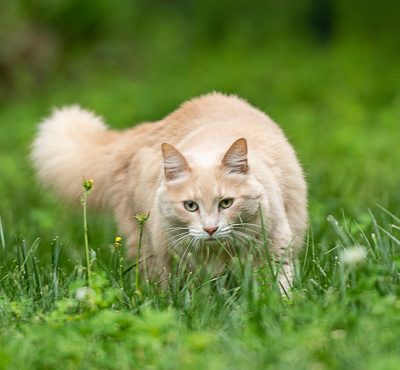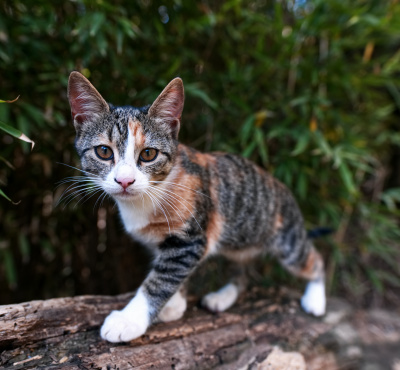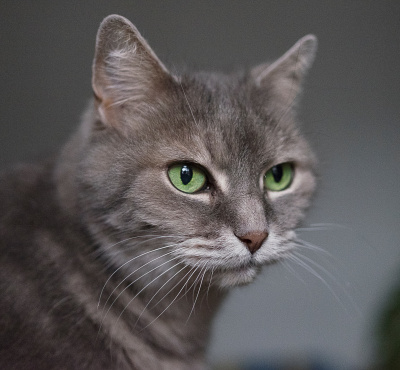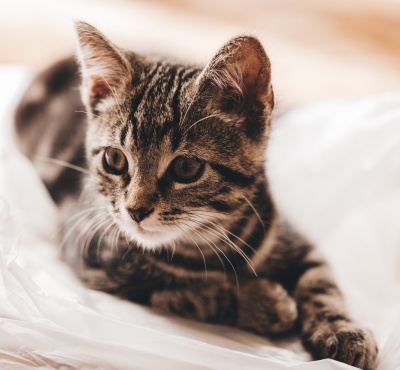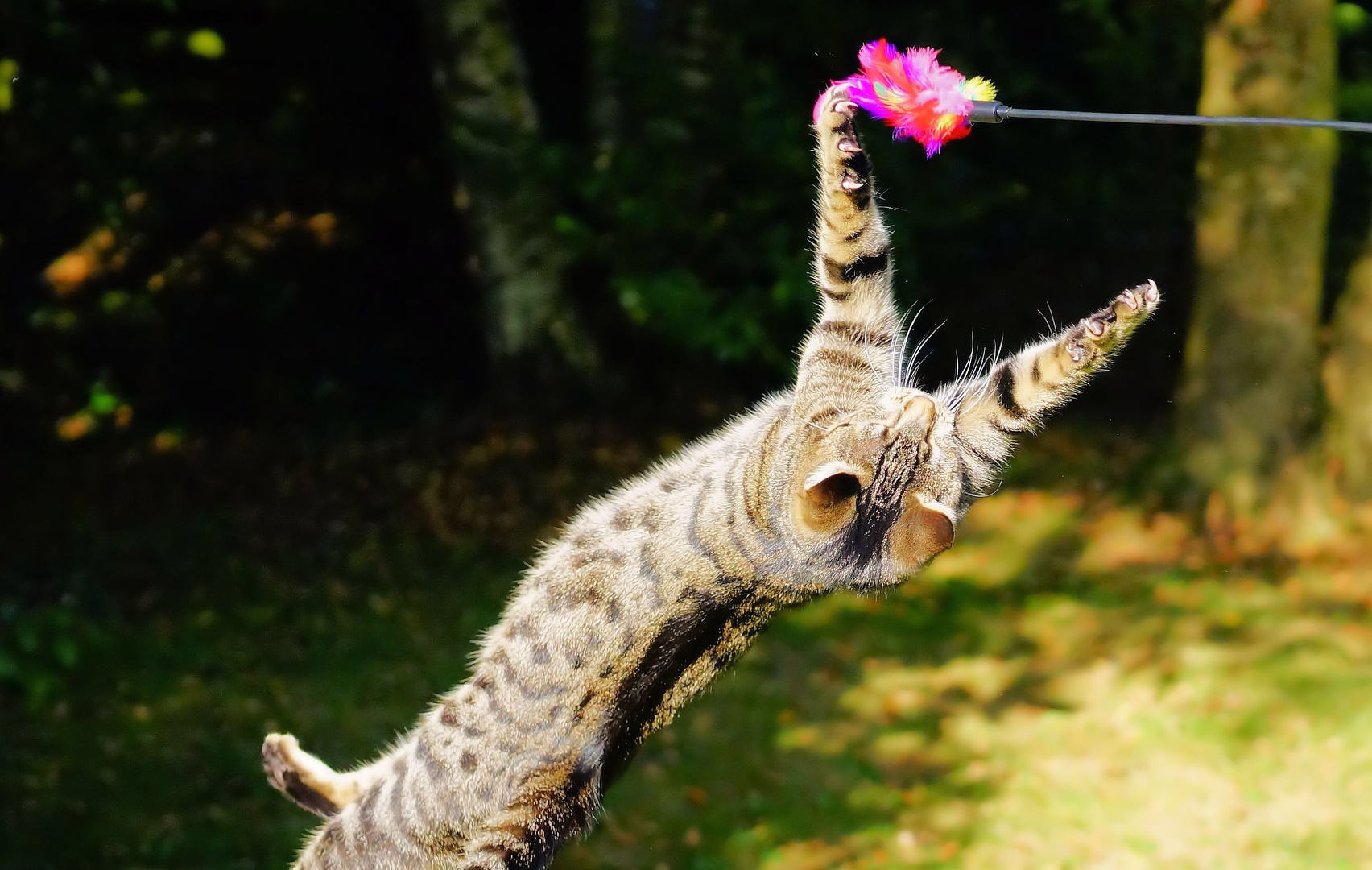
Kočka na zahradě! Víte, jak zabezpečit zahradu i svého kočičího mazlíčka?
S blížícím se létem a přicházejícími teplými dny se na zahrady a chaty nepřesouváme jen my, ale začínáme na ně vpouštět i naše kočičky. Na pozoru bychom se měli mít především u kotěte nebo u kočičky, jež se na zahradu a do venkovních prostor domu či chaty dostává úplně poprvé.
Pro kočku je pobyt venku na zahradě bezesporu velkou událostí. Na jednu stranu nás může těšit kočičí dovádění, objevování, prozkoumávání, první lovení a radost zvířete, na druhou stranu pobyt kočky na zahradách může představovat nejedno riziko. Víte, jak případná nebezpečí eliminovat, jak zahradu připravit na příchod kočičího obyvatele a na co nezapomenout?
Pustit kočku na zahradu, zvláště poprvé, není jen tak a často je potřeba zahradu pro její pobyt připravit více, než by se nám na první pohled mohlo zdát. A protože chovatelé právě v této problematice často chybují, připravili jsme pro všechny majitele kočiček drobný itinerář, na co nezapomenout.
Zabezpečení místa
V první řadě musíme naši zahradu zabezpečit oplocením. Kočka potřebuje mít od první chvíle venku jasno, co je její teritorium a kde se může bezpečně pohybovat. Projít bychom měli celou zahradu a zkontrolovat, zda neobjevíme nějaká skrytá místa, která mohou pro kočku představovat riziko. Zejména jde o nejrůznější skuliny, nekryté prostory, například studny či jámy. Překontrolovat bychom měli i oplocení, zda se pod ním kočka nemůže protáhnout nebo zda například v prostoru mezi vraty a plotem není mezera, kterou by překonala. Vhodné je také vsadit spíše na vyšší pletivo nebo ratanovou zástěnu či rákosovou rohož, kterou kočka prakticky nedokáže překonat. Pokud se nám do tohoto typu oplocení nechce investovat, je vhodné vsadit na vyšší drátěné oplocení, které kočka nepřeskočí. Později se jej díky očkům v pletivu sice může naučit přelézt, ale to už by mělo být ve chvíli, kdy je na zahradě plně socializována, zná své teritorium i místo, kam patří.
Venkovní škrabadlo pro kočku
I venku potřebuje kočka zábavu a možnost využívat škrabadlo. O zábavu se jí postará venkovní svět, zejména možnost skákat na motýly, brouky nebo mouchy, prohánět se za ptáky či schovávat se v trávě. Co však bychom měli kočce venku zajistit, je škrabadlo. V tomto ohledu máme na výběr z více možností. Pokud jsou na zahradě stromy, problém je prakticky vyřešen, kočka pro škrábání využije právě je. V prvních dnech pobytu venku je však vhodné kočku takzvaně navést. Pověsit jí na strom například nějakou její hračku, myšku na provázku nebo plyšáka či stužky, které vlají ve větru a upoutají její pozornost.
V případě, že na zahradě stromy nemáme, můžeme kočce zabezpečit možnost škrábání a obrušování drápků dvěma způsoby. Tím prvním je možnost zakoupit a pevně upevnit klasické škrabadlo, které je k dostání v celé řadě zverimexů. Druhým způsobem je připravit kočce takzvaný „kočkostrom“. Stačí, když si seženeme pevnější větve stromů, které zůstaly po prořezávání, a následně z nich kočce vytvoříme pomyslný strom, který pevně ukotvíme. Vhodné je kočce na něj opět navěsit její oblíbené hračky, popřípadě stuhy nebo provazy, které ji budou lákat.
Venkovní toaleta
Nesmíme zapomenout ani na venkovní toaletu. Řada majitelů koček ji sice neřeší, ale zbytečně tak riskuje skutečnost, že si kočka udělá vlastní toaletu například na udržovaném záhonku nebo bude na toaletu běhat vždy dovnitř domu. Jednak můžeme využít klasické kočičí toalety a stelivo, jednak můžeme použít širší, pevnou a nenasákavou bedýnku či lavor, který vysteleme hrubším pískem. A máme po starostech. Vhodné je také umístit toaletu co nejdále od záhonku, aby kočka hned od první chvíle jasně pochopila, že na záchod se chodí jinam.
Venkovní občerstvení
Kočka je sice od přírody lovec, ale je potřeba myslet na její stravování i během pobytu venku. Na prvním místě bychom ji proto měli zajistit čistou vodu. Tu je vhodné nalít ideálně do blízkosti vchodu do domu do pevné, například kameninové, misky, kterou kočka nepřevrhne a u níž nehrozí vylití vody ani při silnějším větru. Vedle vody můžeme kočce přichystat i misku s oblíbenými granulemi. Je dokonce doporučováno udělat z krmení kočky pomyslný rituál, na který ji vždy přivoláme. Může to být například cinkání lžičkou o misku nebo zvuk otevření sáčku s granulemi či konzervy nebo kapsičky. Tento reflex a přivolání je vhodné trénovat od prvního okamžiku, kde je kočička venku. Hodit se nám to může i v okamžiku, kdy potřebujeme odjet a kočičku nikde nevidíme.
Kočky zároveň milují i trávu a zeleň. Často je tak můžeme vídat, jak okusují trávu na zahradě a někdy se nám můžou pustit například i do bylinkového záhonu. Není proto od věci připravit kočičce její vlastní malý záhonek nebo jí dát například ke vchodu květináč s kočičí trávou, kozlíkem lékařským nebo šantou kočičí, které kočky milují. Navíc jim pomáhají při trávení, takže své kočce jedině prospějeme.
Kočičí dvířka
Pokud nám to dům či chata umožňují, je vhodné kočičce do dveří, které vedou na zahradu, namontovat takzvaná kočičí dvířka. Kočka jimi bude moci volně chodit ven a zpět a nebude nás limitovat mňoukáním nebo škrábáním na dveře. Dvířka se samozřejmě dají zavřít napevno, čímž máme pod kontrolou dobu, kdy kočce umožníme volně chodit ven a během chladných měsíců nebo deštivého dne zajistíme, že nám jimi dovnitř netáhne.
A na co dalšího neopomenout? V prvních dnech je vhodné kočičku na zahradu pustit na jednu nebo dvě hodiny a být pořád s ní a okolo ní. Vše jí takzvaně ukázat, projít s ní celou zahradu a být jí nablízku. Kočka tak získá větší jistotu, a nakonec i my jsme více v klidu, když víme, co kočka zkoumá a co jí zajímá.
Myslet musíme i na venkovní parazity, jako jsou aktuálně klíšťata. Kočku je proto nejprve vhodné vzít k veterináři, který s největší pravděpodobností doporučí antiparazitické pipety, jež se kapou za krk a parazity odpuzují. Další alternativou může být i speciální obojek proti klíšťatům, který ale mnohdy nebývá tolik účinný a v okamžiku, kdy se kočka prodírá skulinou, jej může i rozepnout, přetrhnout a ztratit.
A na pozoru bychom se měli mít i před flórou na naší zahradě. Zejména před rostlinami, jako je oleandr, nebo nejrůznějšími jedovatými plevely, které by kočce neudělaly dobře.
Kočka a její pobyt na zahradě skutečně nepředstavují problém. Stačí nezapomenout na několik základních pravidel a kočička si může užívat chaty a zahrady společně s vámi a vy se naopak můžete těšit z její radosti i její povahy lovce, kterou může venku projevit naplno. Pokud vám tak domů přinese myš nebo jinou kořist, je vhodné ji vždy pochválit, ne ji vyčinit. Nosí ji totiž z opravdové kočičí lásky, kterou nic na světě nenahradí!


